Below is a blog post written by the Burke’s current Primary Source Intern, Andrew McLaren. Andrew McLaren is a Ph.D. candidate in the Department of Religion at Columbia.Andrew McLaren is a Ph.D. candidate in the Department of Religion at Columbia University. His dissertation research focuses on a historiographical text about conquests and politics in the first three centuries of Islam, as well as its reception in various geographical and linguistic contexts and understandings of history. More broadly, he is interested in the function of the writing of texts in social history, particularly in historiography, theology, and law.
The staff at the Burke is thrilled that Andrew will continue to work with us into the next academic year, and we’re thrilled to make this special collection available for research. You can also read Andrew’s post on the Columbia University Libraries Internship Program blog.
Henry Boynton Smith (1815-1877) was professor and librarian at Union Theological Seminary from 1850 to 1874, joining the faculty at UTS after serving as a Congregationalist minister (1842-1847) and teaching philosophy at Amherst College (1847-1850). Smith is perhaps best remembered for the active role he played in the reunion of the Old and New Schools of the Presbyterian Church, beginning with his election as moderator of the General Assembly of the New School denomination in 1863. He also wielded significant influence in the growth of the study of church history in America.
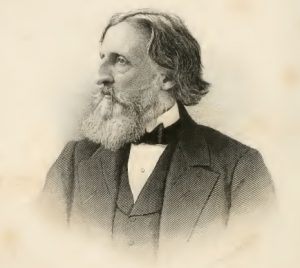
Before joining the faculty, however, Smith spent a long time in pursuit of education, including three years passed in Paris, Halle, and Berlin studying with several prominent theologians, philosophers, and Orientalists. Smith’s time there appears to have been incredibly productive. In a letter (dated April 30, 1839) to his parents, Smith describes a class schedule to make even the hardiest student blush:
My lectures are 8-9, Logic, with Gabler, five times a week ; 9-10, Jewish History, Hengstenberg, five times; 10-11, Job, Hengstenberg, five times ; 11-12, Neander, Acts, six times ; 12-1, History of Christian Doctrines, Neander, three times a week ; 4-5, Criticism of Hegelian Philosophy with Trendelenburg, four times; a lecture on John, twice a week; Homiletics, once; History of German Philosophy, twice a week; Twesten, Introduction to Christian Morals, once a week, and one or two others; one in Goethe and Schiller, twice a week. So you see my time is likely to be full…
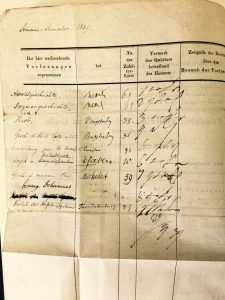
European philosophy in the lifetime of Henry Boynton Smith is usually thought of as sliding into stagnation, its energy sapped by the rise of the natural sciences. But as Frederick Beiser argued in a recent book, that narrative is largely incorrect; rather, the time between 1840 and 1900 actually saw a flourishing among philosophers desperately grappling with a confounded sense of purpose: what role should philosophy play in modern intellectual projects, like the natural sciences?
In this flourishing landscape, Beiser argues, many different stories can and should be told. One story has been recently related by Annette Aubert in her work on the influence of German theologians on their American counterparts, where she argues that H.B. Smith and other students who studied in Europe played a key role in the interpreting those ideas and translating them to America.
As the documents in H.B. Smith’s papers show, the thoroughfares and the byways of his career crisscrossed through the verdant intellectual landscape sketched by Beiser and Aubert. For instance, one of Beiser’s main characters, Adolf Trendelenburg (1802-1872), is one of the teachers mentioned in Smith’s course list, and Smith left behind a notebook full of detailed notes on Trendelenburg’s lecture course entitled Kritik des Hegelischen Systems (“Criticism of the Hegelian System”).
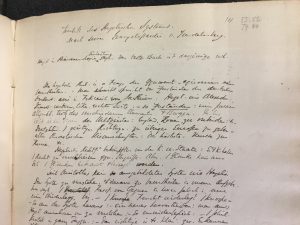
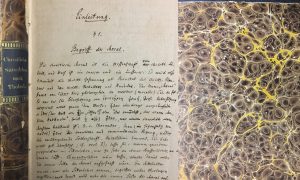
Of further interest are the notes of Smith’s own students at Union in the 1850s and 1860s, which were used in the posthumous publication of three volumes of Smith’s lectures in systematic theology. Even a quick perusal of the pages reveals that Hegel and other German thinkers are not absent from Smith’s work, but their appearance here alongside a broader swathe of philosophers (including English and French thinkers, from David Hume to Auguste Comte) reveals both Smith’s own erudition and the space of interaction into which he carried his German education. All of these intellectual currents are addressed within the broad gaze of Smith’s theology.
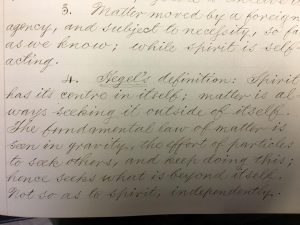
The history of philosophy in the late 19th century took many roads, some less-travelled than others. The papers and publications of Henry Boynton Smith show how one of those roads, travelled by a precocious young man from Maine, passed directly through Union, marked by a collection of signposts and waypoints in the Burke archives.
***
—
Further reading
A.G. Aubert: “Henry Boynton Smith and Church History in Nineteenth-Century America,” Church History 85, no. 2 (2016), 302-327.
A.G. Aubert, The German Roots of Nineteenth-Century American Theology. New York: Oxford University Press, 2013.
- Beiser,After Hegel: German Philosophy, 1840-1900. Princeton, NJ and Oxford: Princeton University Press, 2014.
- Smith,Henry Boynton Smith: his Life and Work. New York: Armstrong and Son, 1881.